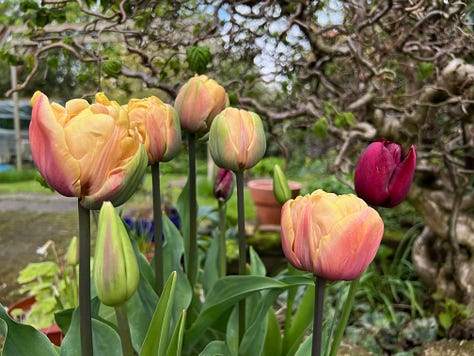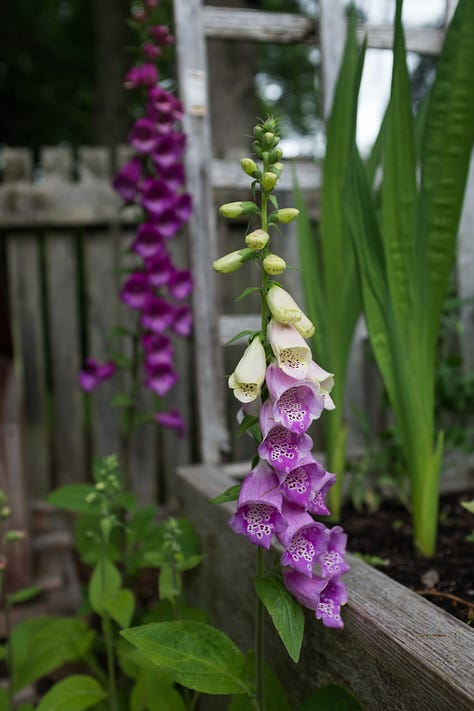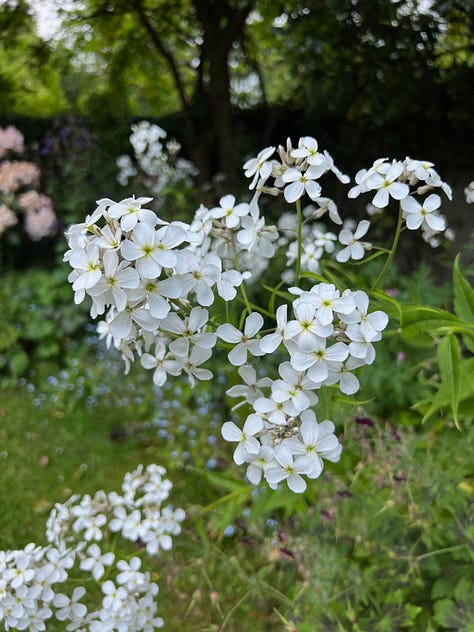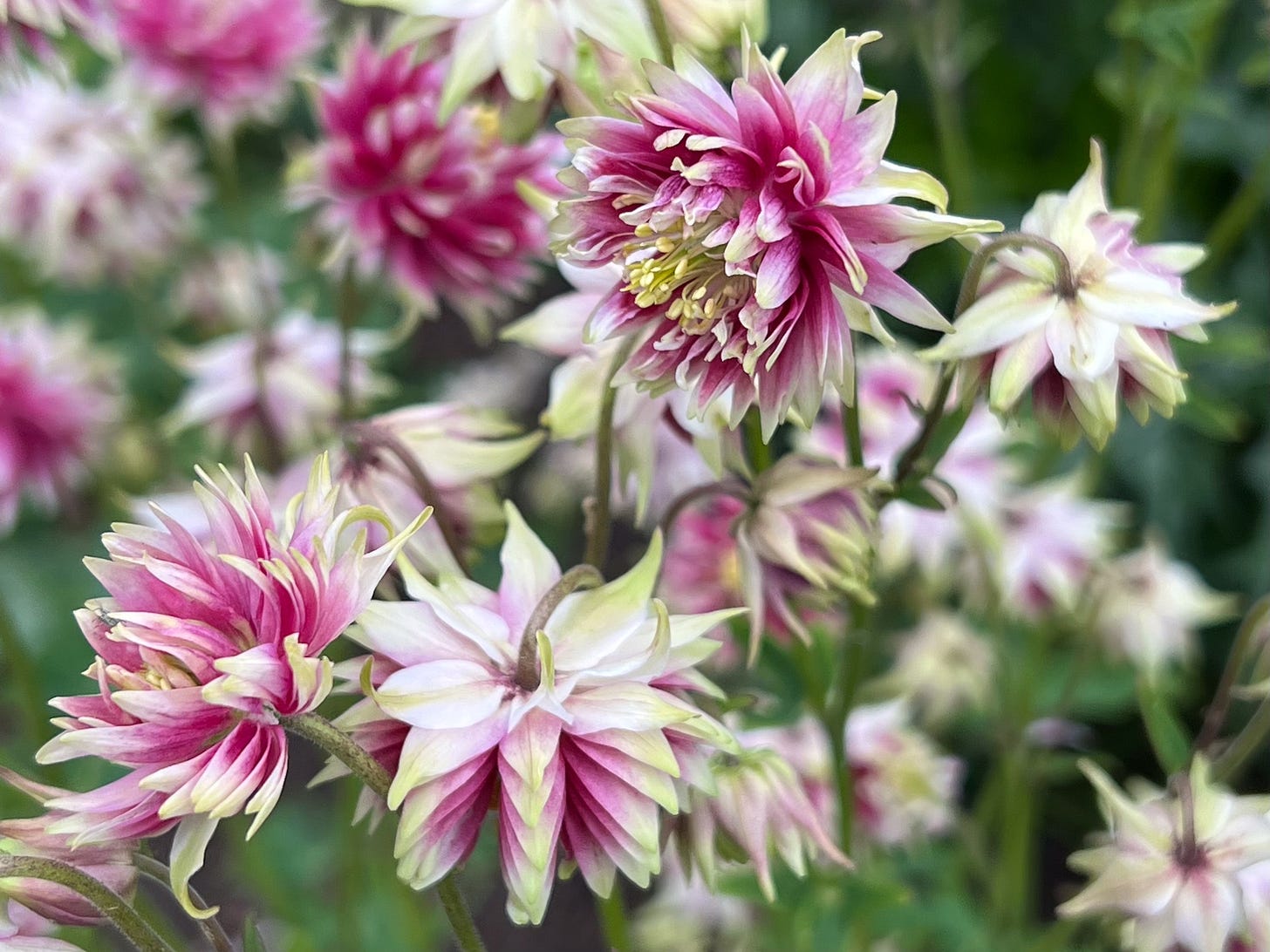Bulbs & biennials
Future you will say thanks for a bit of forward planning...
It’s time to put down the leaf rake and put on the kettle. Pick up that bulb catalogue that’s dropped through the letterbox and let’s have a think about what we might want to see in our gardens in spring. It seems an awfully long way off, with the autumn and winter stretching ahead, but a little bit of preparation now, as the garden settles down to sleep, will ensure early flowers and bright colour as soon as it begins to wake up again in February, right through until summer.
Buying and planting bulbs to flower in spring is best done from September to November, and the garden centres and supermarkets have plenty of packs on sale for you to choose from. There are also online retailers who’ll deliver to your door - especially useful if you want a new or unusual variety.
Is there anything more cheerful than a little pot of narcissi? These are the epitome of spring - a splash of bright yellow ‘Tête à tête’ is the perfect pick-me-up after the dark days of winter. These are freely available and a very popular choice. However, if you’d like to try something a little different, how about petticoat daffodils? ‘Julia Jane’ has pretty primrose yellow cups, while ‘Arctic Bells’ narcissi are ivory-white in colour. Although they’re a little unusual, they both have an old-fashioned air about them, thanks to their petticoat-like shape.
Another early flowering bulb is chionodoxa, or ‘glory of the snow’. Usually blue or soft pink in colour, these starry flowers will pop up in February and March, and make a lovely carpet of colour in lawns or under trees and shrubs. Plant chionodoxa bulbs 5cm deep and about 5cm apart, then watch them gently self-seed and naturalise in the years to come.
Tulips are my personal favourite spring bulbs - they can be lush and blousy or delicate and subtle, and they seem to come in every shade under the sun! I’m often drawn to pink and apricot shades or to bright sweetie-shop colours. I usually plant ‘La Belle Époque’, which is a soft, romantic dusky pink with a touch of mauve and looks beautiful even when it’s fading. It’s gorgeous in a pot, mixed with darker purple flowers. Or at the other end of the scale there’s the classic bright orange ‘Ballerina’ with elegant pointed petals and a sweet scent. Combine this with ‘Purple Prince’ for a warm and joyful display.



How about fritillaries? The remarkable ‘snake’s head fritillary’ is so called because of its chequered pattern, which resembles a reptile’s scaly skin. It’s another bulb which is great for naturalising in a lawn and is very happy in my own shady woodland border in the back garden. It pops up reliably each year, with delightful burgundy purple heads which nod gently in the breeze.
One which is a bit of a showstopper in my mum’s garden every spring is the Crown Imperial fritillary. Tall, sturdy stems hold a frilly crown of red-orange flowers. There’s no other spring bulb for the wow factor, although they do need a little more care, preferring a warm, sunny position and deep, well-drained soil where they can be undisturbed.
Now that we’ve got the bulbs sorted, let’s turn to biennials. It’s not too late to sow a few seeds now of those plants which need time during autumn and winter to establish leaves and roots, ready to flower next spring.
I’m talking about favourites like wallflowers, honesty, aquilegia, sweet rocket, hollyhocks and sweet William. The term biennial means they have a two-year life cycle; whereas annuals germinate, flower and die in just one year, these instead produce foliage in the first year, flower in the second and then die back once they’ve set seed. This means the gardener must do a little bit of forward planning if they intend to have a good show of wallflowers for planters, delphiniums in their ornamental border, or foxgloves in a shady spot, for example.
These can be sown as early as June or July but don’t worry if you haven’t done it yet, you haven’t missed the boat - some mild weather in early autumn may be enough to get these off to a good start. They don’t need to be treated any differently than annuals; seeds are sown into trays or pots on a windowsill or in a cold frame or greenhouse, but it’s worth checking each individual plant for any special sowing instructions.
Once you have your seedlings pricked out into bigger pots there are two different approaches you can take: one is to overwinter these plants in a cold frame, greenhouse or sheltered spot, allowing them to bulk up during the cold months and then planting them out in the spring. The other way to do it is to plant them out into the garden during this autumn if they have germinated quickly and put on a decent amount of growth, as long as the ground is not frozen or waterlogged.
There’s also a third method, and that is to direct sow your seeds into their intended spot or into a nursery bed. It’s more tricky to control the conditions of direct sown seeds - weather conditions, wildlife or over-enthusiastic weeding can sometimes thwart your plans - however it’s also a very easy way to do it, as the plant will grow and develop at its own pace without any root disturbance to check its growth. The gardener has to do very little except ensure the young plants are watered during dry spells and not competing with too many large weeds.
Biennials take a little forward planning, they need a bit of extra space and protection during the winter but they’re well worth sowing at this stage of the year. You’ll thank yourself in a few months when these generous blooms fill the gap in flowering between spring bulbs and summer perennials. Drifts of sweet rocket in white or purple provide colour and scent which is strongest during those lengthy evenings when the weather is warm enough to sit out at dusk. Spires of foxgloves rise up from green foliage in the depths of borders, and are a favourite flower of fat bumble bees, who love to climb up into the bells to access the rich nectar inside.



Another biennial I can’t do without is the teasel, with its sturdy stems and spiky flower heads perfect for the back or middle of a border. Pollinators adore the unusual pink flowers when they appear, and garden birds like goldfinches love feeding from the seedheads which stand proudly and provide structure in your garden right through the autumn and winter. They can self-seed rather prolifically but the offspring are easily identified so can be pulled up or moved around to another part of the garden as desired.
Whichever bulbs or biennials you choose - old favourites or something new and a little bit different - it’s well worth the effort of planning ahead and planting in the coming weeks before Christmas. You will thank yourself early next year when those pots and borders are filled with bright and joyful colours to make you smile and give you hope.
A version of this article appeared in The People’s Friend in 2024








